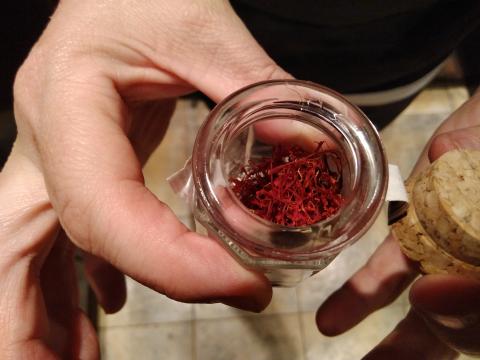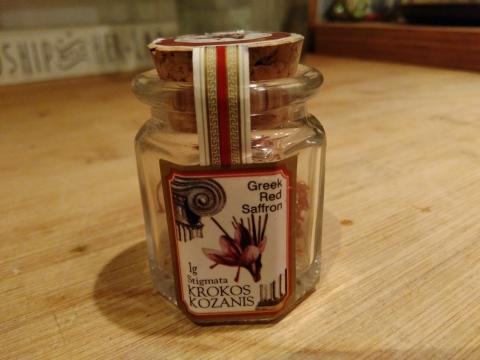The Saffron Bride

I recently ate a lamb dish to which saffron had been added. This exotic and expensive spice is wasted on my insensitive palate, more used as it is to pizza and ready meals. Still, it’s an intriguing ingredient. It contains high levels of mineral, especially manganese which helps regulate blood sugars among other things. It is a costly foodstuff, coming from the stigmata of a purple crocus common to India and Iran. It takes 4,500 crocus flowers to produce a single ounce of saffron and each is often picked by hand. Four pounds might purchase 0.4 grams in 2020, though prices seem to vary depending on the item’s country of origin.
Not only is saffron the source of the dye used for Buddhist monks’ robes, it was offered to the ancient Persian gods during worship. It is found in the Bible, in Solomon’s Song, wherein the Bridegroom sings to His bride (4:14):
Your plants are an orchard of pomegranates
With pleasant fruits,
Fragrant henna with spikenard,
Spikenard and saffron,
Calamus and cinnamon,
With all trees of frankincense,
Myrrh and aloes,
With all the chief spices—
A fountain of gardens,
A well of living waters,
And streams from Lebanon.
How beautiful will Christ’s bride be when she is adorned and awaiting His coming. She will smell of the finest and rarest of spices, and appear ‘as a bride beautifully dressed for her husband’. No expense will be spared, no adornment scrimped. May He come for us soon.
And the Spirit and the bride say, Come. And let him that heareth say, Come. And let him that is athirst come. And whosoever will, let him take the water of life freely.
Revelation 22:17

- Log in to post comments


 Sunday Worship 10.45am & 6.00pm
Sunday Worship 10.45am & 6.00pm